Reviews
What Happens When an Art Critic Reviews an Instagram Trap? Turns Out, That’s a Trick Question
How Dream Machine nearly defeated me.
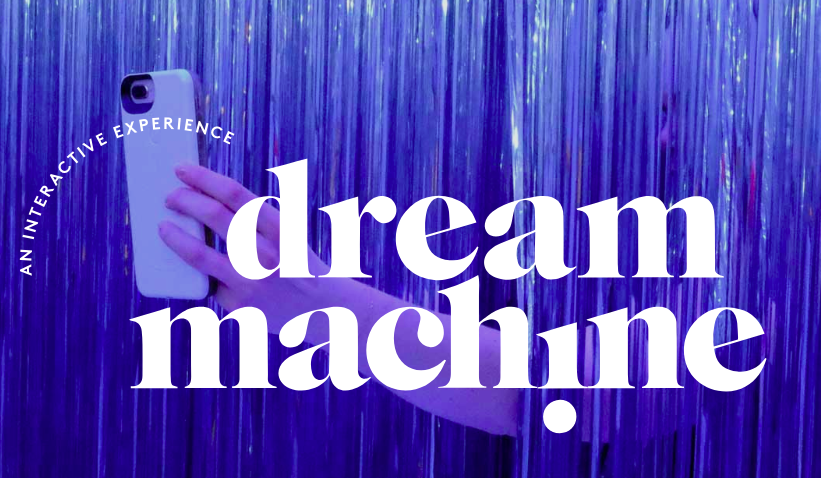
How Dream Machine nearly defeated me.

Ben Davis

Over the past year, those phenomena I have come to call “Instagram Traps”—installation art-ish environments built for social media—have become a serious cultural force. Museums are looking to tap into the trend to expand their audiences. Brands are also piling into them as a way to draw consumers in and get them to circulate their icons.
I’ve written about the phenomenon before, but I hadn’t actually managed to review one of these things as if it were a regular art show. So one Thursday morning, I paid the staggering $38 (!!) for a timed ticket to secure a half-hour slot at the Dream Machine, a nine-room pop-up Instagram experience in Williamsburg, Brooklyn, with this mission in mind.
Most of the entries in this newly proliferating genre of pop-up environment have some kind of chewy theme. The majority register as some kind of fusion of art institution and food porn. Think: the Museum of Ice Cream, the Museum of Pizza, the Egg House, the avocado-themed attraction known as the CADO.
Dream Machine’s theme is comparatively distinct and even arty: “dreams.” The subject is defined very broadly to include both actual dreams and just general hopes and aspirations—a lot to fit into nine rooms.
“We invite you to let your imagination run wild as you explore our surreal-powered playground,” the Dream Machine website explains. It’s a teaser that very clearly says in advance: “This is not for you, ‘word people’!’”
Nevertheless, here I was to see what I could make of it.
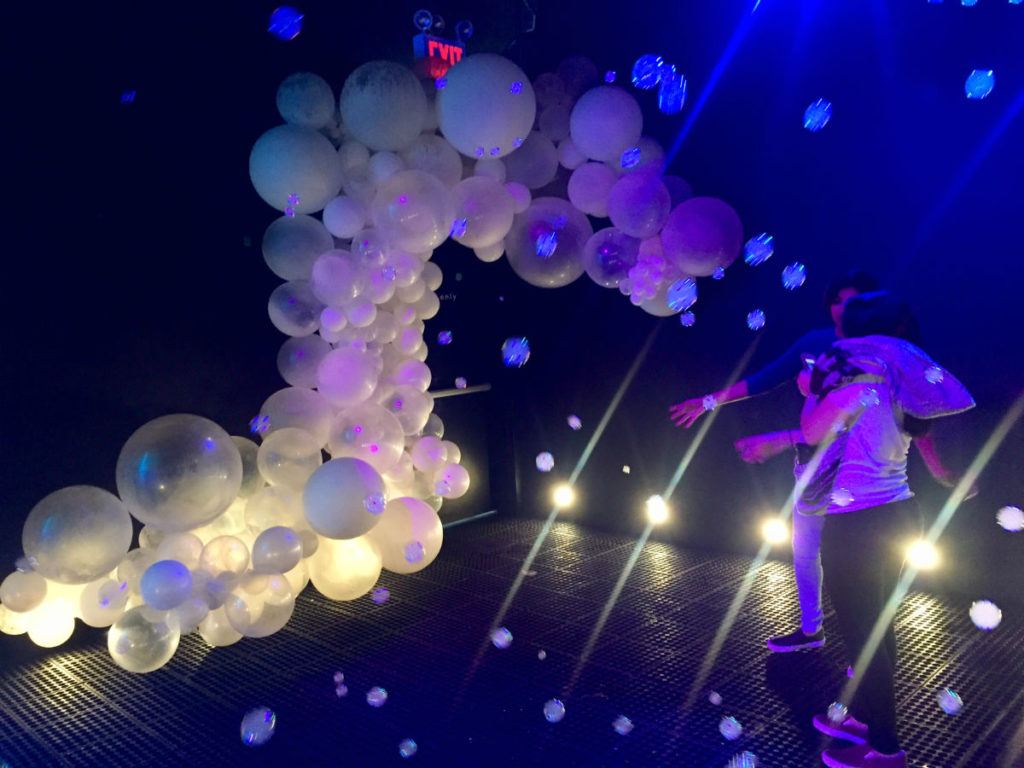
The bubble room inside Dream Machine. All photos by Ben Davis.
You begin in a lobby, where a guide outfitted in a blue jumpsuit explains the rules. (“If you want me to take a photo of you, that is literally part of my job description.”) Then, you enter into a series of chambers. The first presents cottony clouds in an environment of strings of lights, supposedly inspired by Katy Perry’s Teenage Dream album cover.
Chamber two contains a bubble machine and walls decorated with clumps of white balloons. Chamber three is a living room covered in Lichtenstein-esque dots. The dots are all in black and white to symbolize that some people do not dream in color.
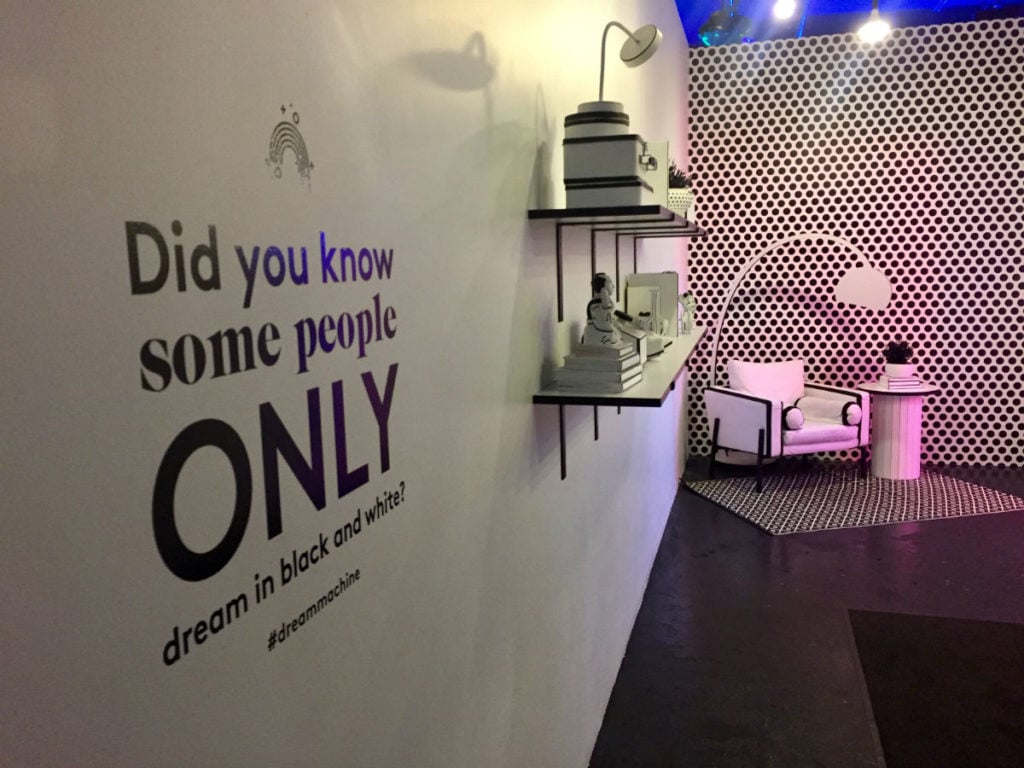
The black-and-white room inside Dream Machine. All photos by Ben Davis.
Chamber four is perhaps the most confusing from the point of view of the already-broad “dream” theme: a laundromat. As you enter, an attendant asks cheerfully, “Do you want some dryer lint?”
The “dryer lint” in question is, in fact, pink cotton candy on a stick, thereby checking the all-important “candy” part of the eye-candy box.
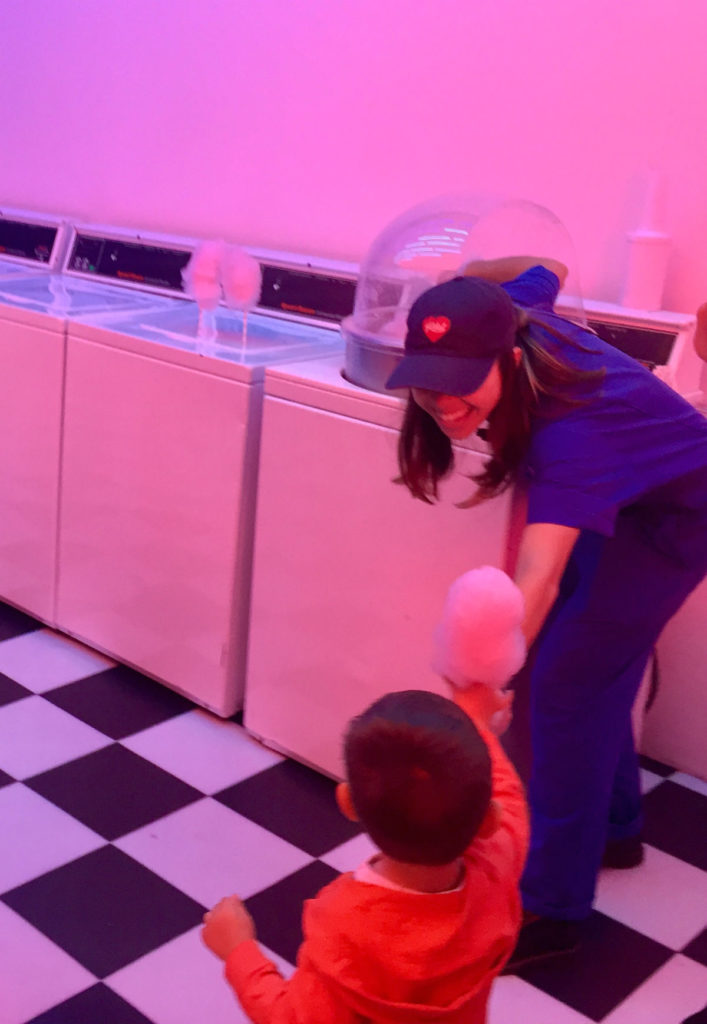
The neon laundromat inside Dream Machine. All photos by Ben Davis.
Also in the laundromat, there is a “secret” door behind the wall of dryers leading to a narrow room that is an unashamed rip-off of a Yayoi Kusama “Infinity Room,” complete with mirrored walls and dangling strings of LED lights.
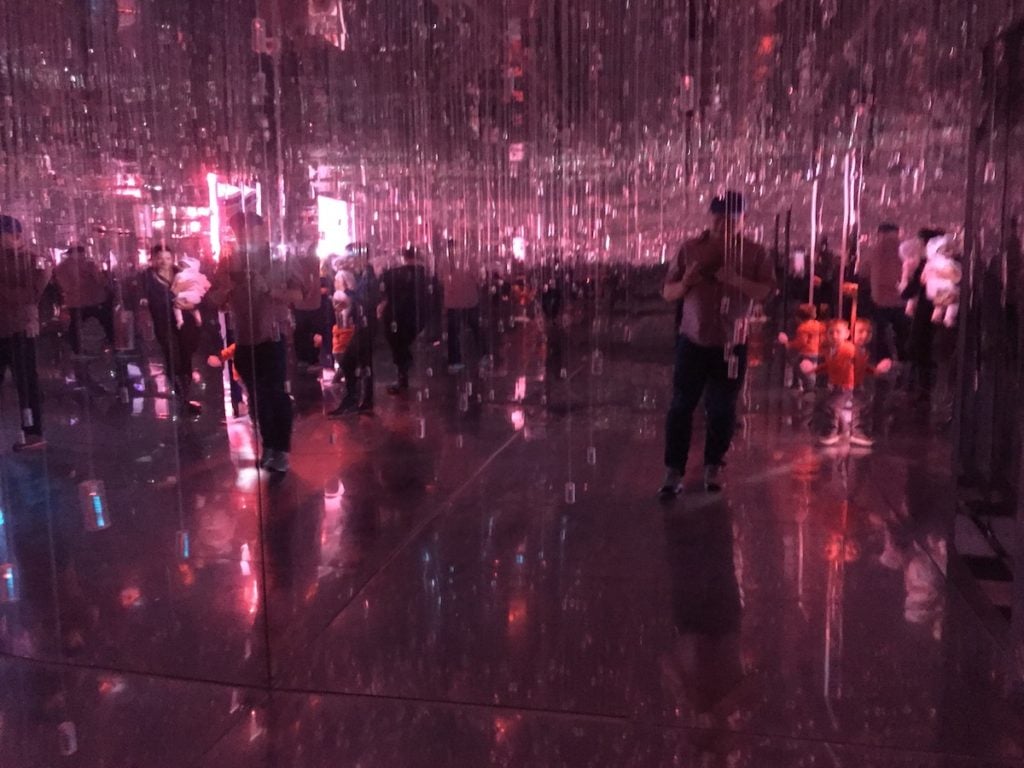
The Infinity Room clone inside Dream Machine. All photos by Ben Davis.
Next up is a room with a pit of blue balls meant to evoke dreams of being in water, which Freud thought suggested sex but here suggest Chuck-e-Cheese crossed with color therapy.
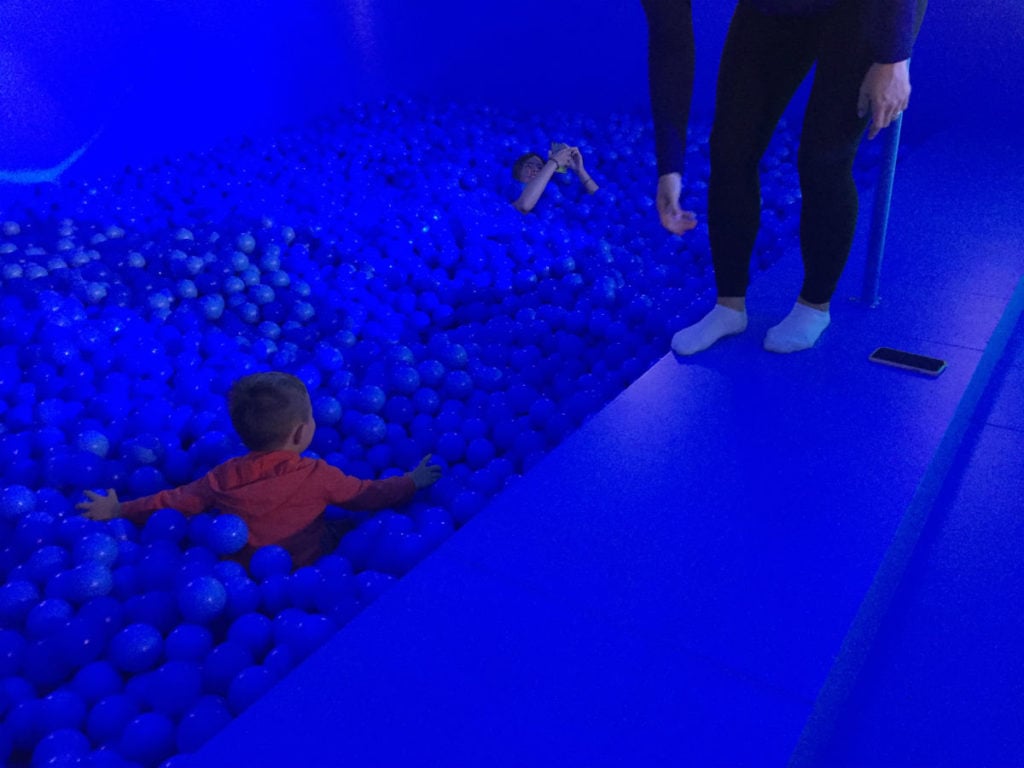
The water room/ball pit inside Dream Machine. All photos by Ben Davis.
Then, there’s a corridor of colored lights, followed by a plastic jungle area lit like a Bushwick nightclub. Finally, you pass through curtains of silver tinsel and beneath a neon sign that says “It Was All a Dream” en route to the gift shop, where you awake from the dream to the reality of merch.
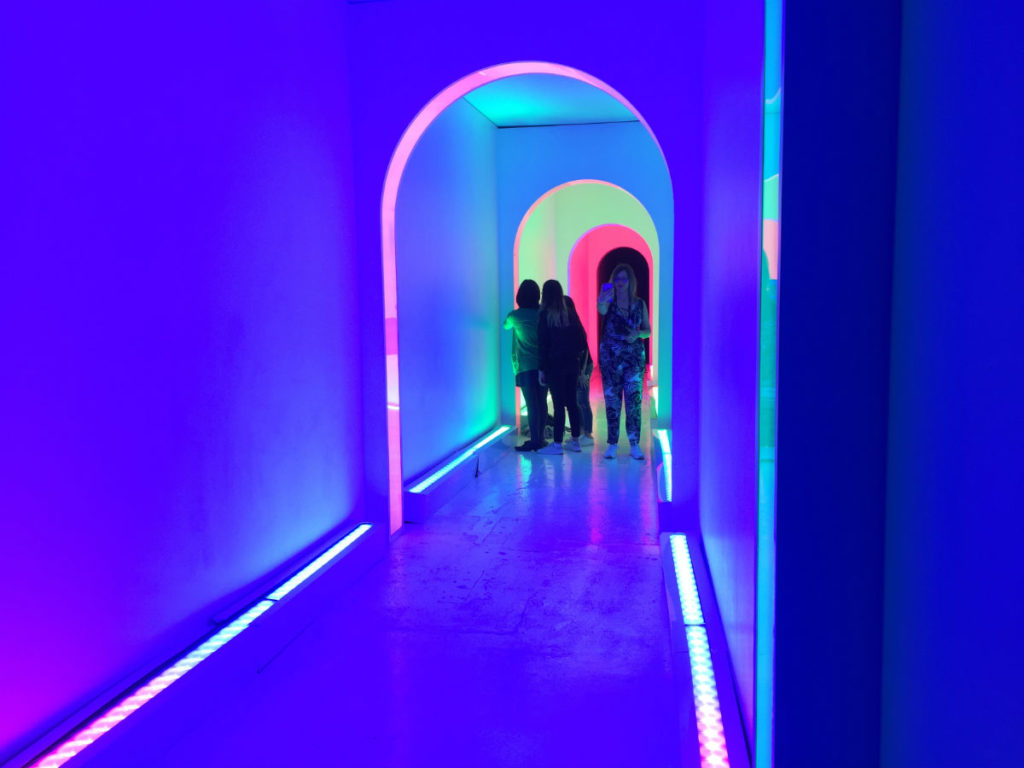
The light tunnel inside Dream Machine. All photos by Ben Davis.
Based on everything I personally would expect from art, this experience is bad.
Dream Machine is remarkable insofar as it is an experience about dreams that so singularly fails to dream. A “surreal-powered playground” it may be, but Dream Machine is constructed almost entirely from the most stock “Instagram Trap” ideas: strings of lights, mirrored rooms, ball pits, neon signs, colored environments, sweets.
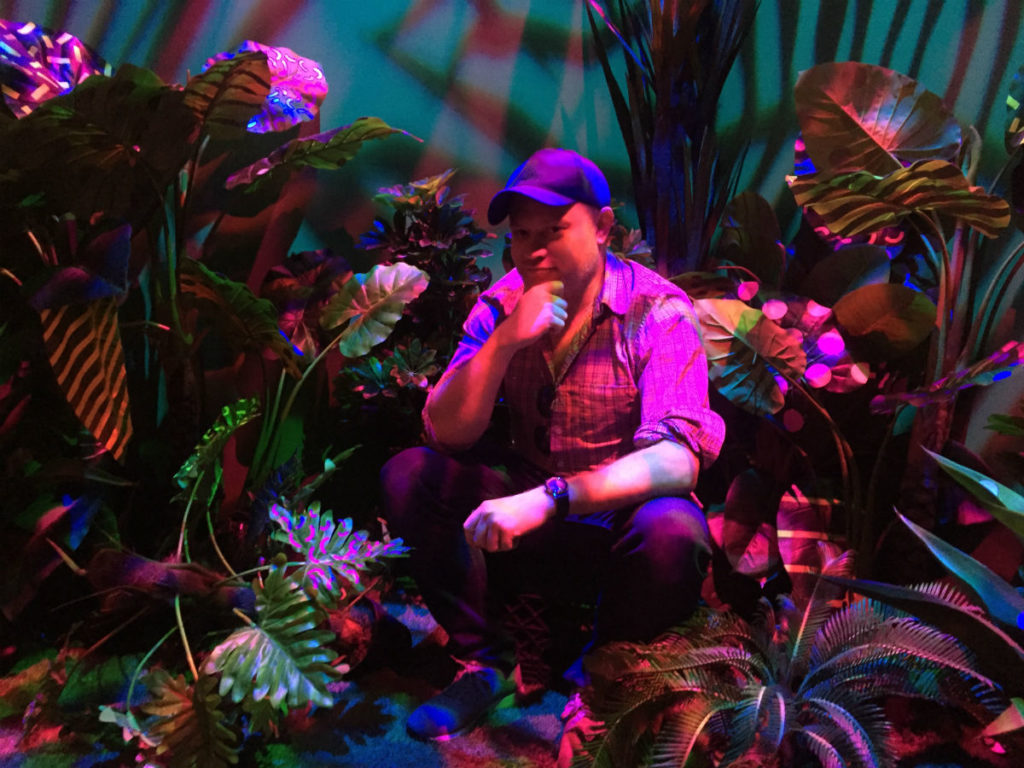
The jungle room inside Dream Machine. All photos by Ben Davis.
Still, I am willing to be challenged by the experience. The world of Dream Machine, and the broader stream of culture of which it is a part, has its own logic. I’m willing to say that it is interesting to me in that it looks like things I might call art, but specifically defeats the normal approach to art criticism—on three counts.
Dream Machine photographs well—but is stunningly chintzy in person. The clouds are dumpy; the bubble room, slimy.
The tunnel of colored light makes you appreciate all the more how absorbing Light and Space works by James Turrell or Doug Wheeler are as installations. In person, such environments feel spotless and sacred, an effect that requires precision design, exacting use of materials, and meticulously hidden technical elements to preserve the magic.
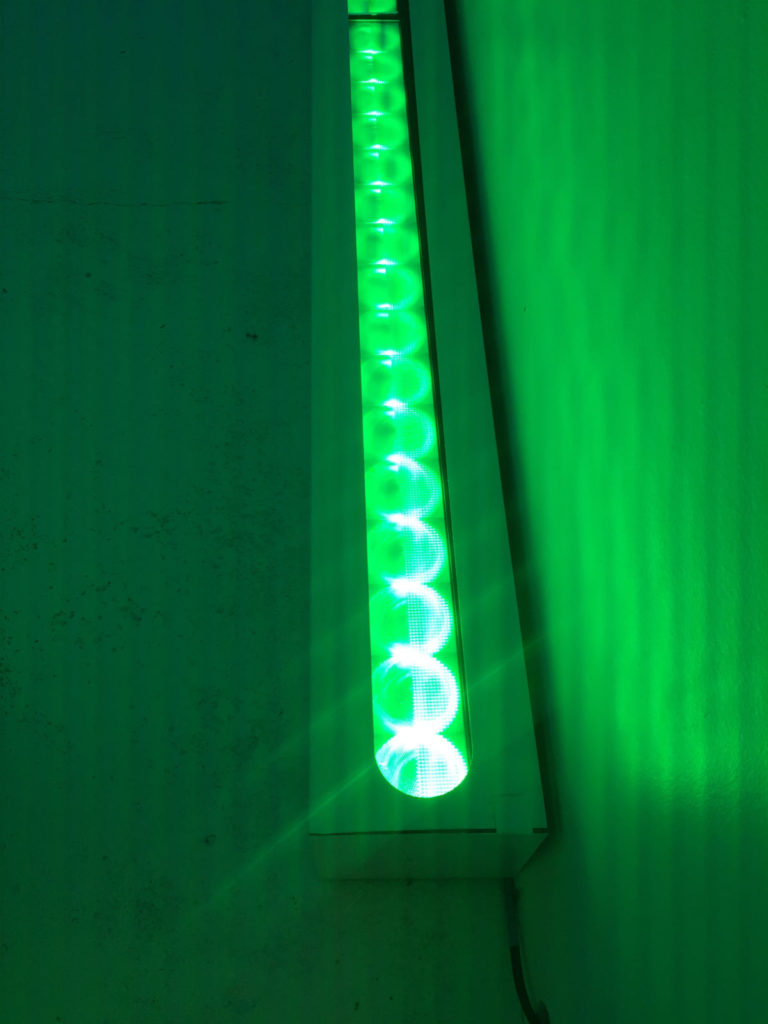
An element of the tunnel of light area in Dream Machine. All photos by Ben Davis.
Clearly, the Instagram Trap genre scratches a different itch, palpably not about presence. In a Wired article about “The Rise of Made-for-Instagram Museums,” the founder of another attraction, San Francisco’s Color Factory (coming soon to Soho!), explains: “Maybe a warmer light would have felt better to be there but a whiter light looks better on Instagram.”
You won’t really remember—nor could you review Dream Machine honestly in terms of—the physical experience of being in it; only how it looks. The enduring part of the experience is how it lives as a photo, and so only its photographic qualities manner. Your sense of materiality is muted.
Which is also why Dream Machine can get away with hustling you through so fast, with just enough time to take a few pics per space. All the value is in its photographic afterlife.
Reviewing the nine rooms of Dream Machine as if they were art installations is like trying to review a picture frame or an Instagram filter. As standalone tableaux, they feel like they lack something; that something is you.
I mean, it is obvious which of the two photos below is more interesting!
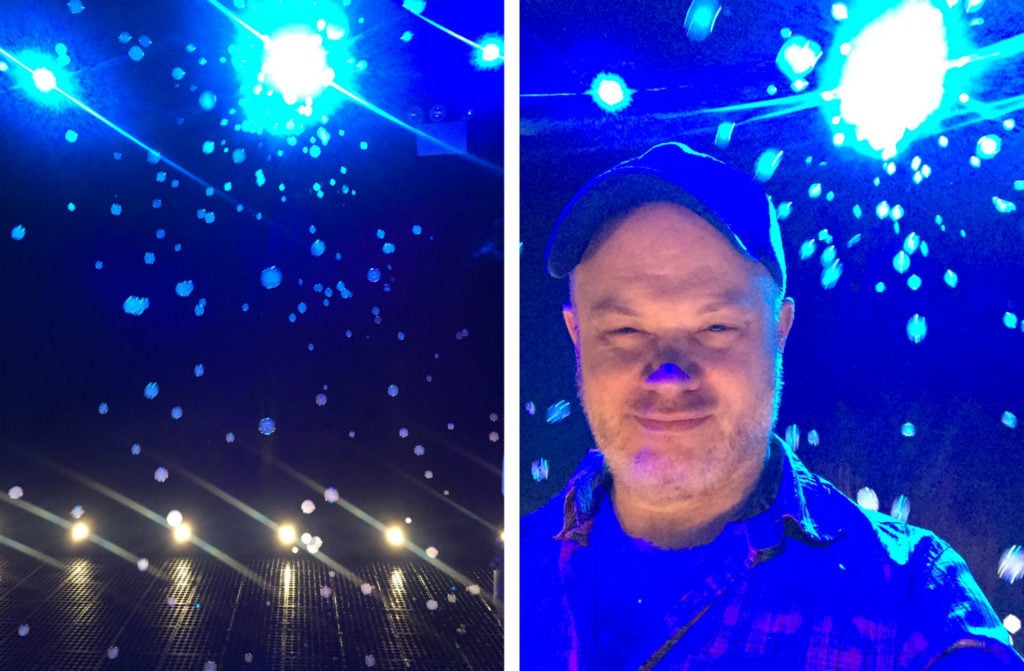
Left: the Dream Machine bubble room; right: the Dream Machine bubble room, vastly improved.
In classic Kantian aesthetic philosophy, the “judgement” of art was specifically about removing a given object of contemplation from “personal interest.” The aesthetic was the domain where you separated yourself from attachments to artist or subject matter, and judged the work independently.
Postmodern aesthetics questioned whether that lofty goal was even possible, or desirable—and Instagram Trap Aesthetics takes that idea to its inane anticlimax, presenting an art experience engineered, from the ground up, to be inseparable from the experience of your own image, and therefore impervious from judgement outside of “self-interest” in its most literal sense.
The ideal review format for this kind of thing is probably just someone making a face into the camera:
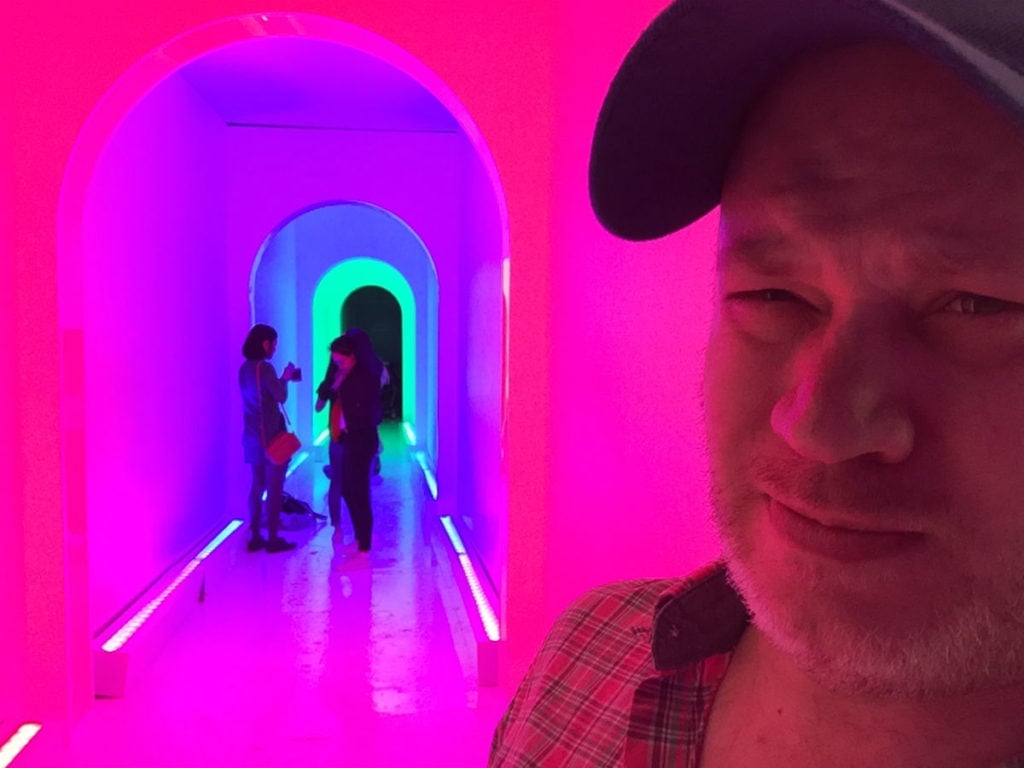
A cutting review!
This may seem like a contradiction to the last point. But if the raison d’être of Dream Machine is not a concentrated appreciation of the physical environment, it’s also not just the appreciation of one’s own image.
This type of thing is clearly best experienced socially (which was true of everyone else who went through with me, except for one solitary tourist from Sweden). My hypothesis that I could go as an observer and review it like an art installation was flawed. The pleasures of posing together, discovering and sharing optimum spots, and communally reviewing the photographic evidence is what fills in the space left by the receding pleasures of materiality and artistic symbolism.
In fact, museum specialists like John Falk have always said that the “spiritual pilgrim” type of museumgoer, who goes to commune individually with art, is not really the only—or even the main—kind of museumgoer anyway. Most people visit museums to experience art socially, implying a much more distracted form of contemplation.
It is even arguable that if Dream Machine were too interesting as an installation, it would be less interesting socially, since that would demand concentration and thereby make it a more introverted type of experience. Individual critical expertise is therefore not the model consciousness it demands; it demands social expertise, and social modes of review.
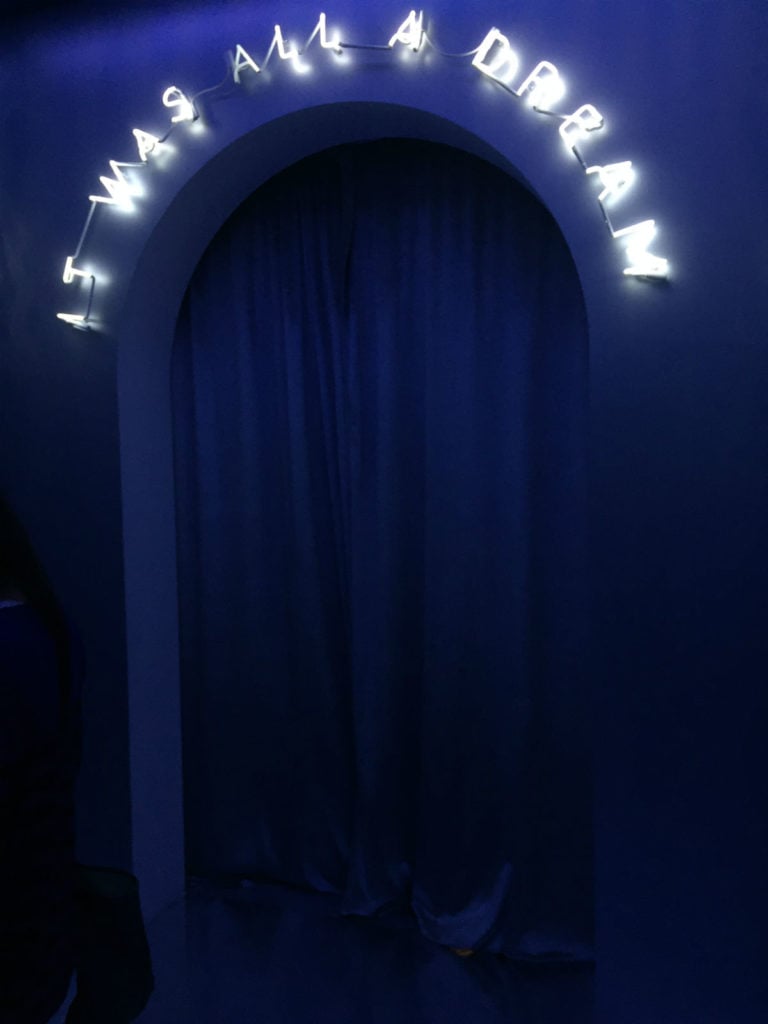
The exit to Dream Machine. Photo courtesy Ben Davis.
That’s not to say that it couldn’t ever be reviewed—these types of experiences can definitely be good or bad versions of what the thing they are trying to be. It’s just what that thing is represents very changed ideas about artistic experience, which is worth noting. Though I guess I am also not inclined to pay another $38 to test out that thesis, which is a kind of judgement itself.
Dream Machine is on view at 93 North 9th Street in Brooklyn, New York, through July 29.